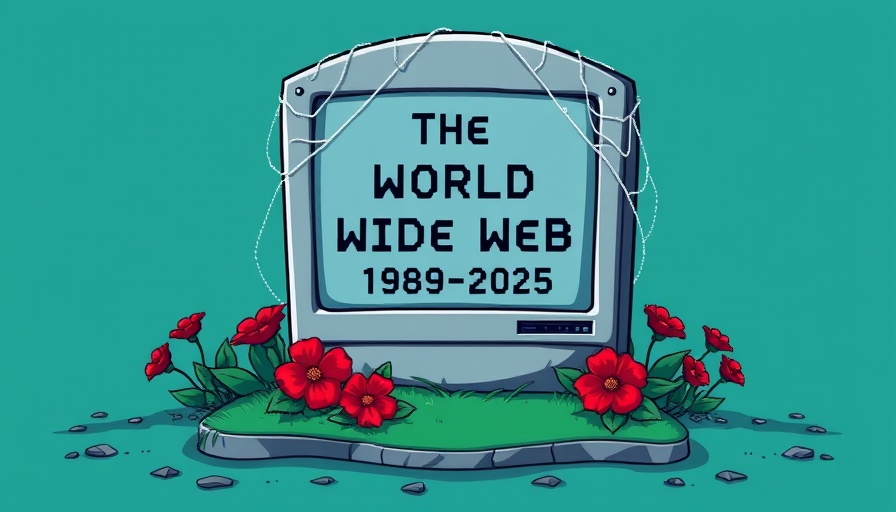
Understanding the Decline of the Web and AI's Role
As AI technologies like ChatGPT rapidly become mainstream, there is growing alarm among business leaders about their potential to disrupt the web. Matthew Prince, CEO of Cloudflare, reported a surge of concern from major media companies grappling with the implications of AI on their economic viability. The essence of these calls is clear: AI is altering the business landscape, challenging the conventional economic contracts that sustain the internet.
The Economic Impact of AI on Content Creation
AI's ability to generate content is undermining traditional media economics. Businesses that emit revenue through advertisements depend on unique content to attract visitors. When AI can produce similar content faster and at lower costs, it disrupts the value proposition of original creations. This not only threatens revenue streams for media companies but also shifts consumer behavior as they increasingly consume AI-generated outputs that lack the depth of human analysis.
Exploring Solutions: Can AI and Human Creation Coexist?
In light of these threats, what can businesses do to regain control? One potential approach is to explore hybrid models where AI tools enhance rather than replace human-generated content, allowing quicker insights while preserving quality. This strategy could enable businesses to reduce costs and maximize their investment in AI technologies by improving efficiency without sacrificing the depth needed for effective storytelling.
Potential Pathways for Business Resilience
Looking ahead, businesses must assess their strategies regarding AI. Exploring partnerships with AI firms or investing in proprietary technologies could bolster their positions in the market. Additionally, as the regulatory landscape evolves, companies may need to adapt their models in line with emerging norms and restrictions to ensure sustainable practices in this new era. Resilience amidst change is crucial.
Ultimately, while AI poses significant challenges to the fabric of the web, it also presents opportunities. As cost-conscious business owners explore affordable AI solutions, harnessing these technologies effectively can lead not only to survival but growth. The key lies in integration and finding a balance that preserves the value of unique human contributions while leveraging the speed and scale of AI solutions.
 Add Row
Add Row  Add
Add 










Write A Comment